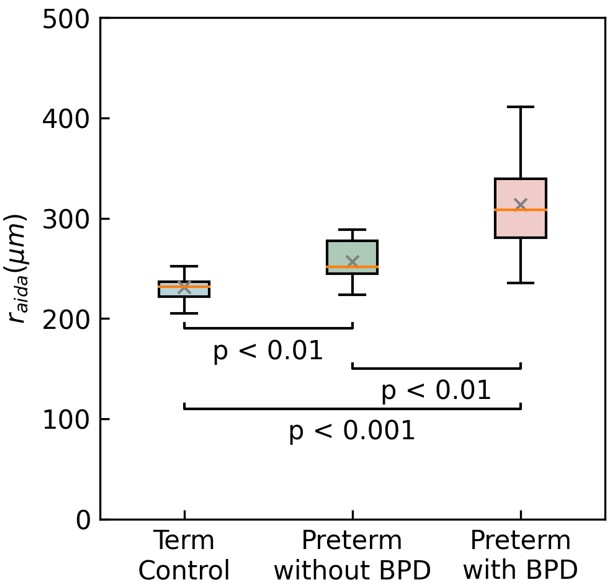Abstract
Preterm birth often results in respiratory complications, sometimes including the diagnosis bronchopulmonary dysplasia (BPD). These infants are thought to have fewer and larger alveoli than their term peers. It is still unclear to what degree this persists later in life. We used the new aerosol-based method Airspace Dimension Assessment (AiDA) to evaluate the size of the distal airspaces for adolescents that were born preterm with and without a diagnosis of BPD.
We investigated 41 adolescents between 15-17 years of age: 17 preterm with BPD, 8 preterm without BPD and 16 term born controls. We used AiDA to measure distal airspace radius (rAiDA) in the lungs by inhaled aerosols. In addition, lung function was evaluated by spirometry, impulse oscillometry and diffusing capacity of carbon monoxide (DLCO).
The average airspace radius, rAiDA, was 313±54 µm for the BPD group, 257±23 µm non-BPD preterm group, and 231±12 µm for the controls (p<0.001). Early gestational age was strongly associated with enlarged distal airspace radii (p<0.001). The preterm group had normal lung function, apart from a decreased forced expiratory volume in the first second (FEV1, p<0.05) and DLCO (p<0.05).
According to the AiDA measurements, the adolescents born preterm had larger distal airspaces than their term peers. The link between lower gestational age and increased airspaces may potentially be due to an earlier arrest in lung development.
